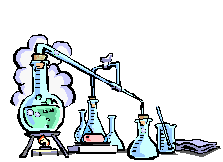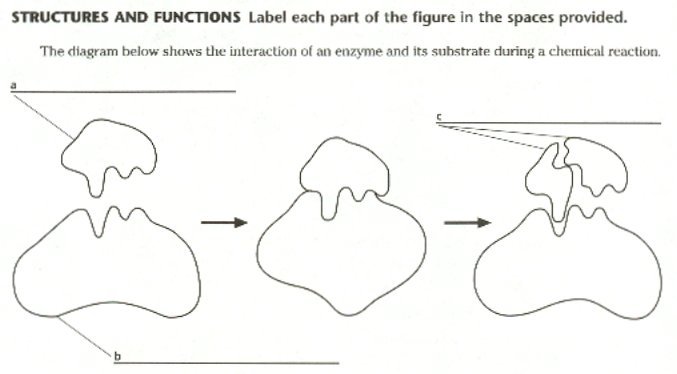| Biochemistry Review |  |
1. Molecules with a slightly negative end and a slightly positive end are called ___________________ _____________________________.
2. A monomer of protein is called an __________________ __________________.
3. An attractive force between like particles is called ___________________________.
4. Organic molecules that catalyze reactions in living systems are ______________________.
5. The compound found in living things that supplies the energy in one of its chemical bonds directly to cells is ______________________.
6. Enzymes lower activation energy by___________ to the ____________________ and ______________________ bonds within the ________________________.
7. The monomers that make up nucleic acids are called __________________________.
8. The type of attraction that holds two water molecules together is called __________________________ __________________________.
9. The sharing of three pairs of electrons is called a ___________________ _____________.
10. The structural building block that determines the characteristics of a compound is called the _____________________________ _______________________.
11. Large carbon compounds are built from smaller molecules called ______________________________.
12. What is the type of reaction that forms large molecules from smaller ones? _________________________________ _____________________________.
13. What type of reaction breaks large molecules into smaller ones? _______________________
14. What is the by product of a condensation reaction? __________________________
15. The attractive force between unlike particles is called ____________________________.
16. A compound that is stored as glycogen in animals and as a starch in plants is ____________________________________.
17. Lipids are good energy storage molecules because they have many _________________-___________________ bonds.
18. What are the components of many lipids? ________________________ ______________________
19. What is the monomer of many polysaccharides? ______________________________
20. What kind of reaction allows amino acids to become linked together? ________________________________ _____________________________.
21. Nucleic acids function primarily to carry __________________________ ____________________ and direct _____________________ ______________________.
22. Tends not to react with water, “Water Fearing” ________________________________
23. Attracted to water molecules, “Water Loving” _________________________________
24. Water is called a ___________________________ ___________________________.
DIRECTIONS: Read Chapter 3, Biochemistry, and Answer the questions below as completely and as thoroughly as possible. Answer the question in essay form (not outline form), using complete sentences. You may use diagrams or pictures to supplement your answers, but a diagram or picture alone without appropriate discussion is inadequate.
1. Describe the structure of a water molecule, and explain how the electrical charge is distributed over the molecule.
2. Describe the structure of amino acids and proteins.
3. What are the structural differences between monosaccharides, disaccharides, and polysaccharides?
4. What is capillarity? Include defining Adhesion and Cohesion.
5. How does a condensation reaction differ from a hydrolysis reaction?
6. Give Three reasons why water is an effective solvent.
7. What is an organic compound?
8. What property allows carbon compounds to exist in a number of forms?
9. The presence of four electrons in the outermost energy level of a carbon atom enables
carbon atoms to form what THREE Things.
10. Living things contain many different proteins of vastly different shapes and functions.
What determines the shape and thus the function of a particular protein?
11. How does the structure of a phospholipid, linear molecules with a polar end and a
nonpolar end, relate to their function in the cell membrane?


